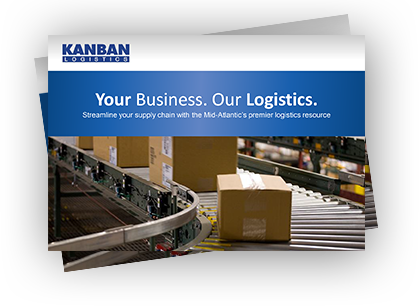 Storing raw goods and packaging materials in a food manufacturing plant is inefficient. It eats up costly production space, ties up labor, and pivots the manufacturer’s attention away from what it does best: produce great food products.
Storing raw goods and packaging materials in a food manufacturing plant is inefficient. It eats up costly production space, ties up labor, and pivots the manufacturer’s attention away from what it does best: produce great food products.
When food processing plants decide to be in the business of warehousing, instead of focusing attention on design and production, they take on non-core tasks that cost them time and money.
By outsourcing non-strategic plant services, it’s possible to increase throughput and greatly improve financial performance. Learn more in our blog: Plant Services: What Manufacturers Can Learn from Great Chefs.
So what’s the best alternative?
Many food manufacturers have found the answer in outsourcing, and are housing raw materials outside of their factories and then shipping the goods to plants on an as-needed basis.
For example, an inbound logistics warehouse close to your plant, can receive, store, and prepare goods for JIT delivery. Inventory is typically managed on a full-featured warehouse management system, which allows suppliers secure access to their inventory data.
Four Reasons to Outsource Your Warehouse
The benefits of outsourcing your warehouse include:
- Free up space in your plant:
Why use up all of that valuable floor space storing raw materials, packaging, and waste when you can offload this responsibility to a competent inbound logistics provider? - Increase plant throughput.
By moving packaging and raw materials off site, food companies can increase throughput by freeing up space for production that was formerly used for storage. Materials can then be delivered just in time from a nearby warehouse. - Provide cost effective storage space close to key customers.
Real estate is expensive, and who knows when you’ll need to scale up (or down) to meet customer demands? Avoid this uncertainty by working with a logistics provider that already has the facilities and space you need to succeed. This approach allows food manufacturers to drive efficiency by leveraging lower cost warehousing space and labor. - Minimize inventory investments.
No food manufacturer can afford to hold onto excessive amounts of inventory in today’s cost-conscious business environment. Using a JIT delivery approach, companies can reduce risk by having inventory available at a moment’s notice, and when and where they need it.
Small Food Manufacturers Can Use the Same Strategies as the Big Boys
To create food manufacturing efficiency, many large processing plants have shifted to lean models that largely outsource related logistical tasks. But small and midsized operations continue to manage these tasks with internal staff within the plant facility.
The good news is that the same strategies that big manufacturers are using can help you dramatically improve your own plant’s financial performance—in terms of both cost and throughput.
An experienced logistics service provider can help reduce inventory, free up valuable resources, make room for more equipment and employees, and enhance cash flow.
Rather than storing raw materials and components in a section of your factory, consider storing these goods at an inbound warehouse managed by an experienced third party logistics provider.
For more ideas on how to drive efficient food manufacturing operations, read Kanban’s ebook, Use Logistics Partners to Improve Plant Throughput and Financial Performance.
Never Miss a Blog Post
Join our email list to receive new posts in your inbox. We will never spam you. Opt out anytime.
Blog Post Categories
- Outsourcing 3PL (72)
- Warehousing (72)
- North Carolina (52)
- east coast logistics (47)
- manufacturing logistics (26)
- Food Logistics (19)
- Fulfillment (18)
- CSX Carolina Connector (17)
- Miscellaneous (14)
- Free Trade Zone (FTZ) (12)
- FTZ / Free Trade Zones (11)
- Intermodal (11)
- Rail Siding (11)
- Port of Virginia (10)
- Cross Docking (7)
- Kitting (5)
- Aerospace (3)
- Pharmaceutical (3)
- Kanban News (2)
- QVC Rework Services (2)
- COO (1)
- container yard services (1)
- flexible (1)
- operations (1)
- scale (1)
- scott freeman (1)





